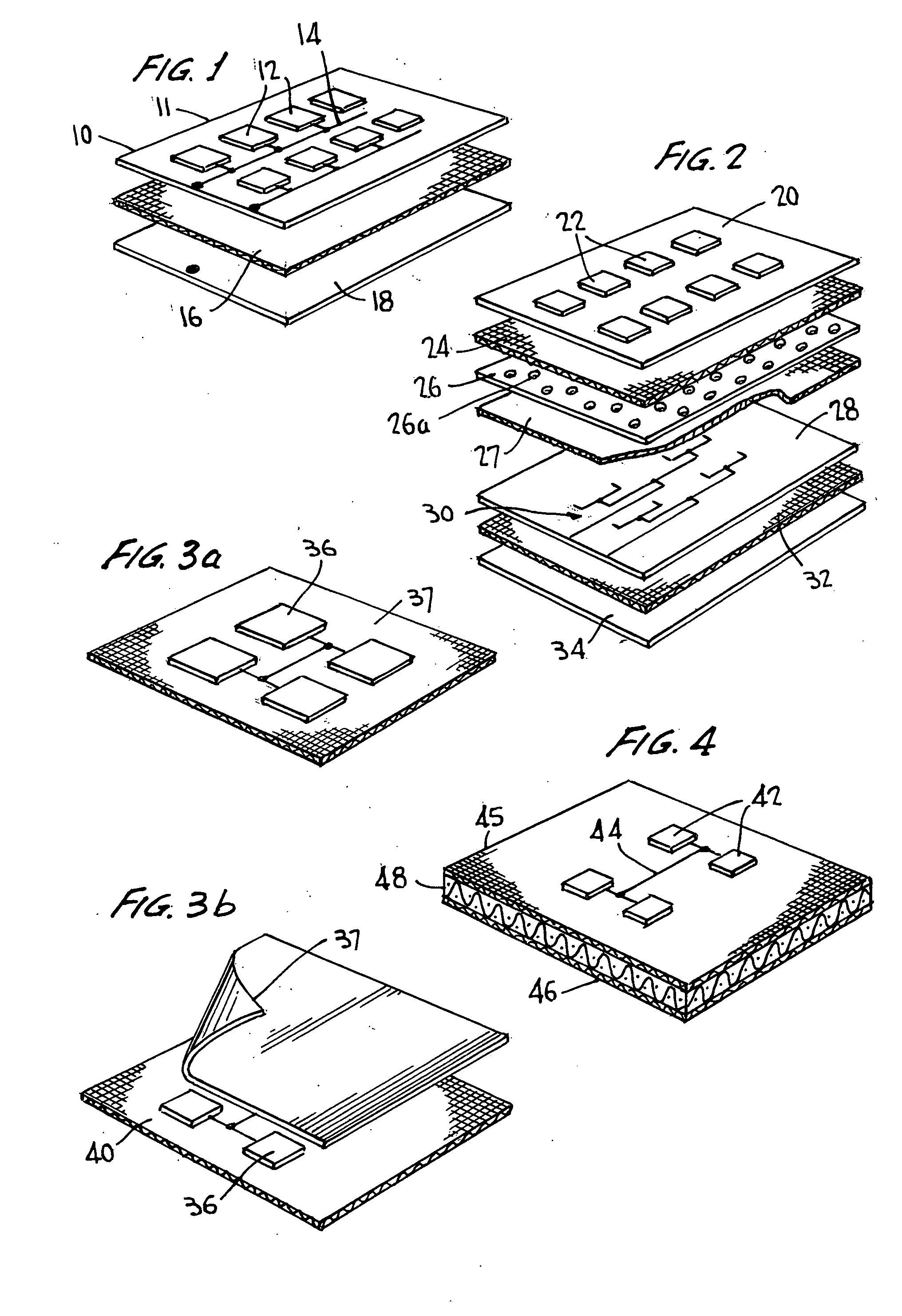Method for constructing antennas from textile fabrics and components
- Summary
- Abstract
- Description
- Claims
- Application Information
AI Technical Summary
Benefits of technology
Problems solved by technology
Method used
Image
Examples
Embodiment Construction
[0044]FIG. 1 shows one embodiment of a three-layer microstrip microwave array antenna according to the invention. A first layer 10 comprises a retention fabric 11 on which conductive patch antennas 12 and feed lines 14 are disposed. These elements may be fabricated of conductive thread, stitched to form the desired patterns, or comprise metallized fabric cut to form the desired patterns. A second spacer fabric layer 16 provides the necessary dielectric material spacing the first layer from a third layer 18, comprising a conductive metallized fabric, which serves as the ground plane, that is, the antenna waveguide boundary. The feed lines and ground plane can be connected to the associated electronics using techniques discussed below.
[0045] Examples of the metallized fabric that can be used as the ground plane and to form the patch antenna elements and feed lines are ShieldEx RTFK 151G; 3M Conductive Copper Impregnated Polyester Tape; 100 Count, 46 Ga. woven copper cloth; Graphite f...
PUM
| Property | Measurement | Unit |
|---|---|---|
| Electrical conductivity | aaaaa | aaaaa |
| Flexibility | aaaaa | aaaaa |
| Transmission | aaaaa | aaaaa |
Abstract
Description
Claims
Application Information
 Login to View More
Login to View More - R&D
- Intellectual Property
- Life Sciences
- Materials
- Tech Scout
- Unparalleled Data Quality
- Higher Quality Content
- 60% Fewer Hallucinations
Browse by: Latest US Patents, China's latest patents, Technical Efficacy Thesaurus, Application Domain, Technology Topic, Popular Technical Reports.
© 2025 PatSnap. All rights reserved.Legal|Privacy policy|Modern Slavery Act Transparency Statement|Sitemap|About US| Contact US: help@patsnap.com



